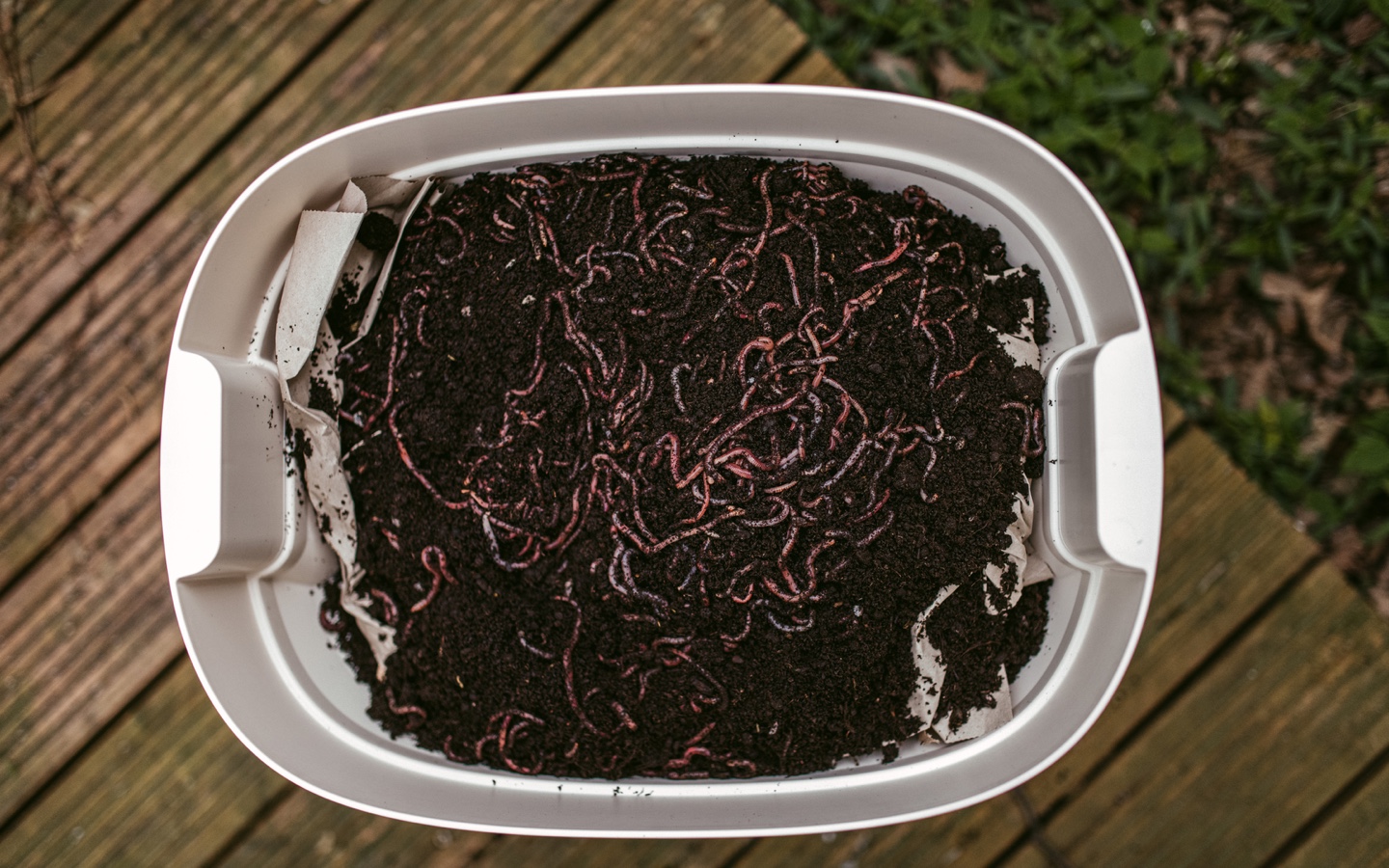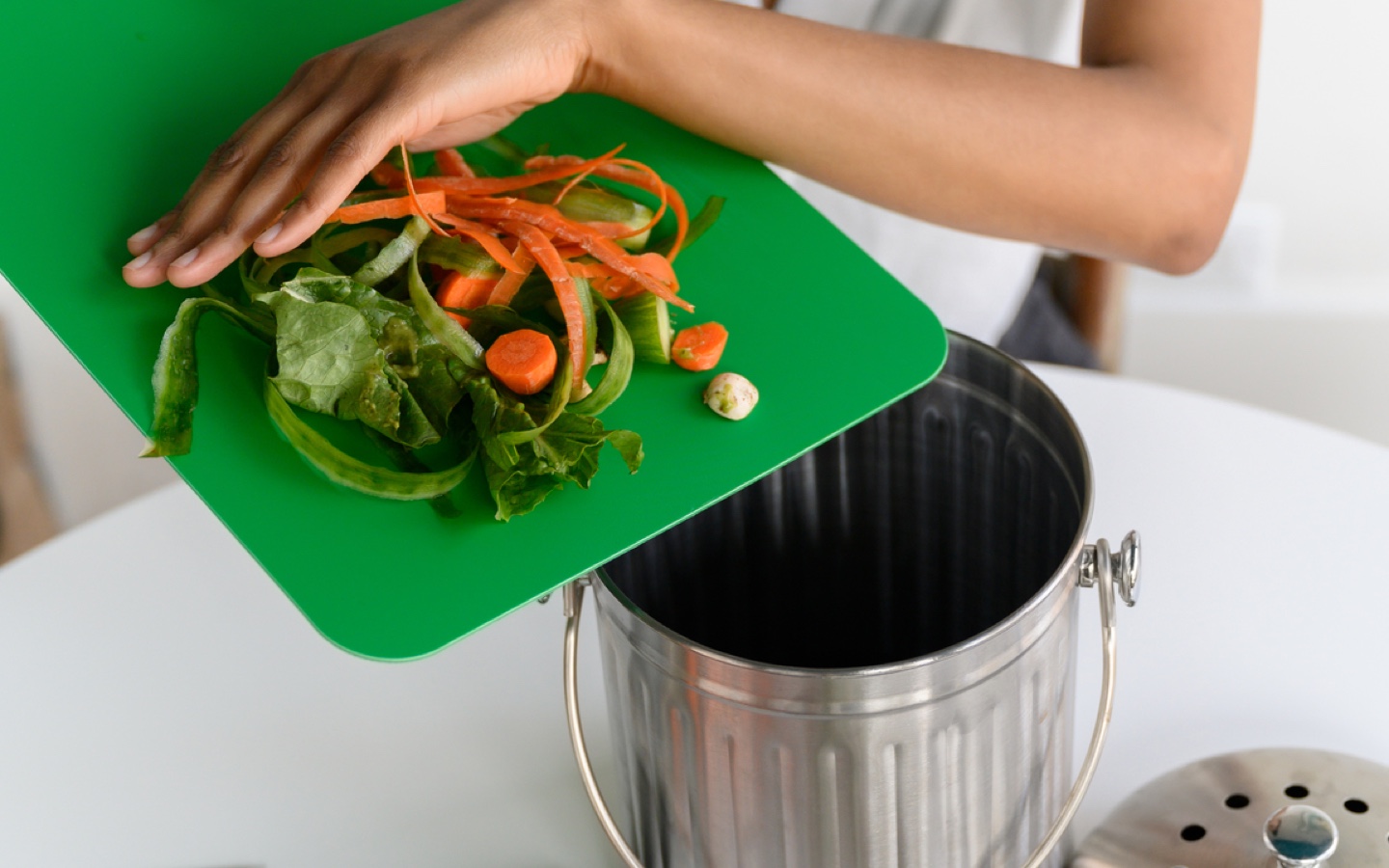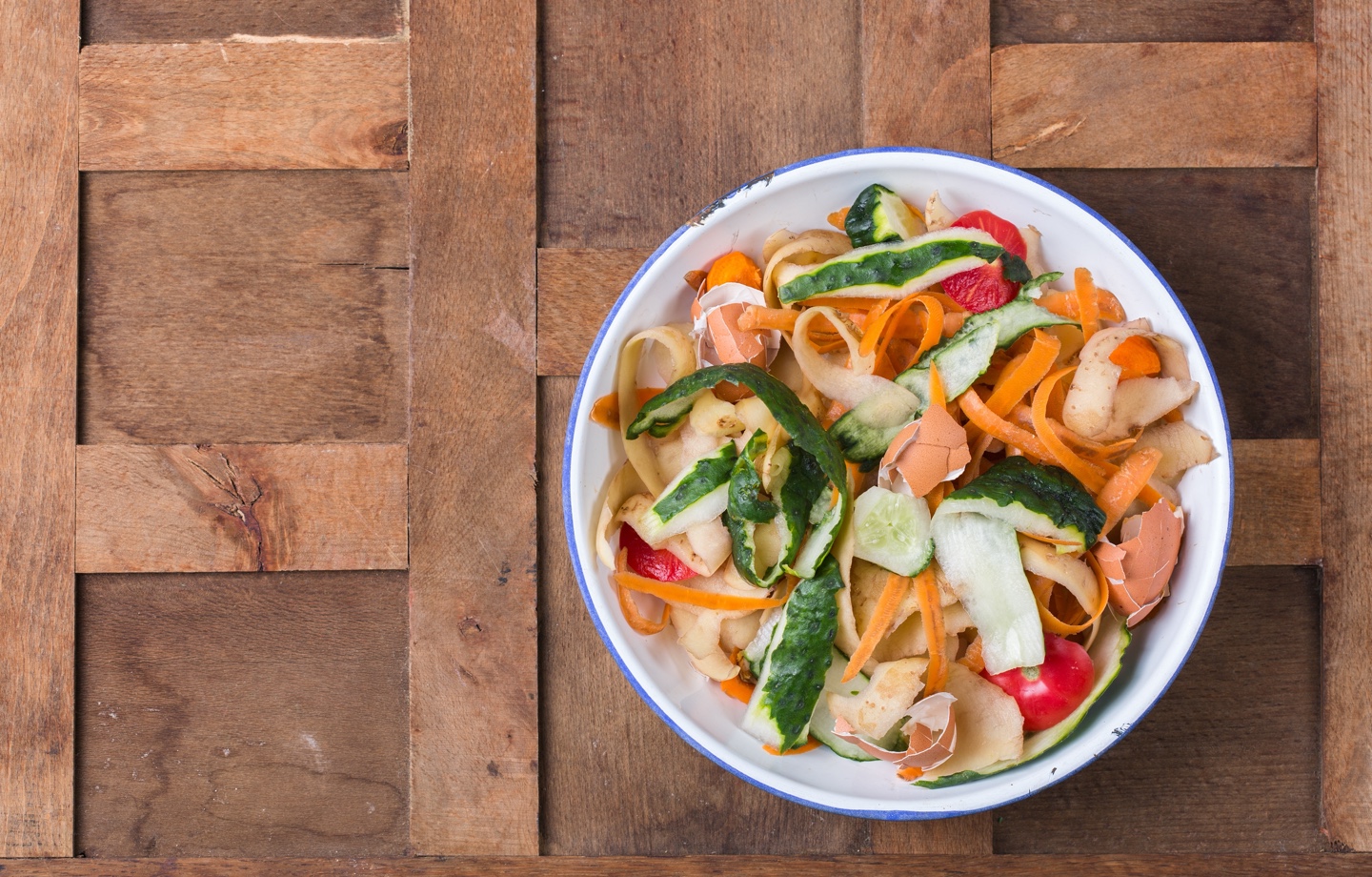Composting is a simple way to reduce your carbon footprint and food waste. You don’t have to live in a house or even have a yard, either. Here’s how to compost in a small space with three easy options.
Like writing a thank you note or going to the dentist, composting has always felt like something I should do, even if I’m not legally obligated. I felt this for years, but I didn’t get serious about it until last year when I was locked inside with my trash. It started spontaneously. One day, I began collecting food scraps in an empty milk carton on the kitchen counter. I didn’t know what I’d do with the contents when the vessel filled up, I just felt guilty trashing egg shells and onion peels every day.
Read more: How to Grow Mushrooms at Home
Turns out, I had reason to feel guilty. About 103 million pounds of food is wasted a day, which is approximately 30 to 40 percent of the food supply in America. A lot of what’s wasted could be used to feed the more than 35 million people struggling with hunger. And once food ends up in a landfill, the harm’s not done — it sits, decomposing while emitting methane into the atmosphere and destroying the ozone.
With this in mind, I buried the tangerine peels and moldy lettuce from my kitchen counter carton in the dry earth in front of my Santa Fe apartment. (Spoiler alert: The stuff didn’t break down. I checked.)
Read more: How to Propagate Your Plants
A year after my initial experiment, I’ve done significantly more research and learned there are a handful of ways to compost effectively even in a tiny apartment. I’m now collecting my scraps in a five-gallon bucket and dropping them off at the farmer’s market to be processed by The Urban Canopy, a composting collective. It takes between two and three weeks for the bucket to fill up and costs $5 every time for a clean container. I also talked to Celeste McMickle, a sustainability consultant and self-proclaimed “crazy composter,” for insight and tips about how to easily turn produce trimmings, paper bags, and more into nutrient-rich soil. Here are the details:
What you’ll need:
- A plastic bin
- 500 red wrigglers
- Newspaper scraps
- A dark, cool space, like under the sink or in a closet

Check out this guide and/or book for step-by-step instructions on how to get rolling.
Pros: This is the least expensive and most fun option. You’ll see your food processed in real-time, and you can use the soil for your plants or garden. McMickle told me that once a worm bin is up and running, it doesn’t take much to maintain. She spends just 10 minutes a week tending hers.
Cons: For some, sharing a space with a bunch of worms is a big con. And even though a bin is low-maintenance, you have to keep up with it — it’s more like caring for a fish than a recycling bin in terms of effort. Plus, worms can’t eat everything that can go in the compost. They don’t like citrus, bread, meat, or oily food.
What you’ll need:
- To link up with a compost pickup service, local garden, farmer’s market, or food co-op
Here’s a database of composting spots in every state.
Pros: You don’t need to fret about what you throw in your donation bucket — pretty much all food waste is fair game, including paper towels (as long as you haven’t used them to wipe up chemicals or non-organic substances). And once you find a spot to process your scraps, it’s a cinch. You’ll also get the benefit of being part of a community of composters to assist you as you get started.
Cons: This method can be expensive depending on the service you choose. Some weekly collection services add up to hundreds a month. But you can cut costs by opting for biweekly or monthly pickups or by going in on a service with other neighbors.

What you’ll need:
- Counter space
- A mini compost tumbler or grinder
Pros: This can be a sleek and easy option for processing scraps, and many models don’t require worms if that’s a turnoff.
Cons: If you’re just getting into composting, McMickle says this might be a big investment; most processors are upwards of $200.
Whether you’re hands-on or hands-off, low- or high-tech, there’s a method for you to give your old scraps new life — you just have to figure out which is best for you and you’ll be in business.
Did you try any of our composting methods? Share it with us by tagging @avocadomatress on Instagram or Facebook.

Shop Pillows
The Essential Organic Pillow Collection
Gentle, breathable, non-toxic support.





